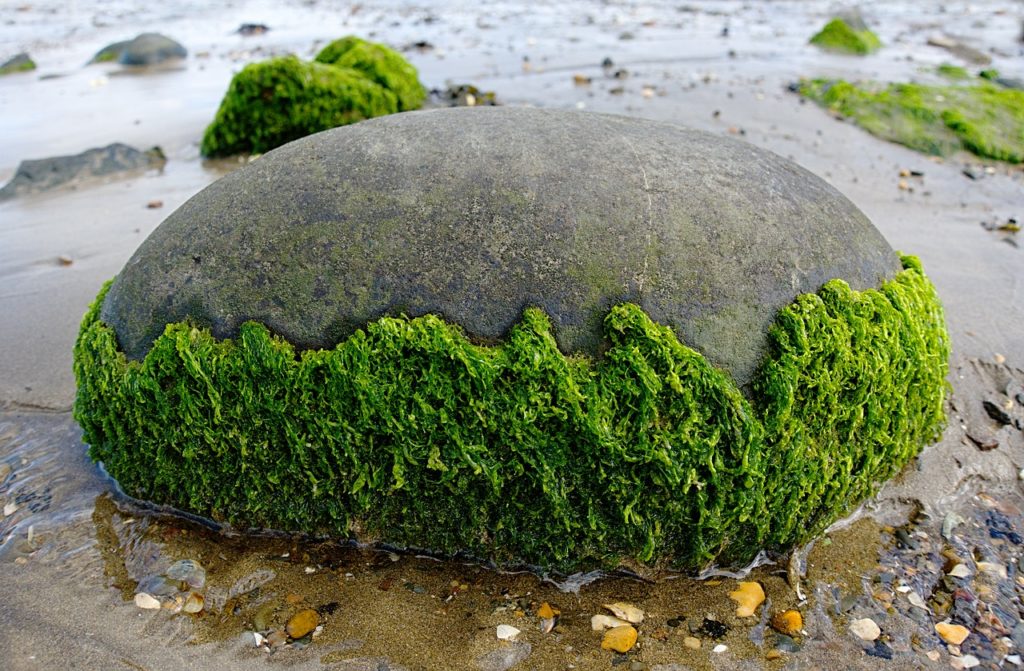It turns out that algae, the green fuzzy stuff that covers rocks, coats shorelines, and thrives in swampy areas, might be the renewable fuel source we’ve been searching for. Algae and microalgae are photosynthetic organisms (they generate energy from sunlight and CO2) naturally found in freshwater ecosystems. Researchers in Cuba and Belgium have assembled a review of 17 studies documenting findings from using algae as a biofuel in diesel engines.
Biofuels are fuels made from plants. Corn, for example, can be processed to produce the E85 ethanol fuel option at gas stations. The other options at the gas station — regular, mid-grade, premium, or diesel — are produced using fossil fuels. These ancient fuels are created from extracting and processing decayed organic materials (such as plants) that have been buried for millions of years. Unfortunately, the refinement process for fossil fuels isn’t exactly energy-efficient, and there are human health and environmental issues that follow, which makes this option less than ideal.
The authors explain that algae and microalgae (microscopic algae) hold many advantages as a future biofuel. Because these organisms grow quickly and require little addition of nutrients such as fertilizers, they have potential to fulfill the world’s transportation fuel demand. As a bonus, algae and microalgae can consume carbon dioxide (CO2), a potent greenhouse gas, and can grow in areas where conditions aren’t great for other types of agriculture.
Engines found in most automobiles run by igniting a mixture of air and fuel by using a spark plug. Diesel engines, commonly found in semi-trucks, airplanes, and tractors, run by greatly compressing air in a chamber until the air reaches a temperature where it can ignite fuel injected into the combustion chamber. Biofuels, such as those made from algae, are used in diesel engines.
Some types of algae are more suitable for biofuel synthesis than others, such as Chlorella and Spirulina. Choosing the right species of algae is one of the most important first steps, they report, as it ultimately impacts the engine’s performance and amount of exhaust emissions.
The authors report a variety of engine tests performed by researchers who studied different ratios of original diesel fuel mixed with biodiesel or pure biodiesel obtained from microalgae. Blends tested have ranged from a “B5” (5% biodiesel, 95% diesel fuel) to “B50” (50% biodiesel, 50% diesel fuel). In one study, algae B30 fuel was slightly more efficient compared to diesel fuel, and a rapeseed oil biodiesel also showed similar results. The engine exhaust gas, nitrogen oxide (NOx), showed no significant differences between fuels, but carbon monoxide was reduced by 10% when biofuels were used. Overall, the studies found that B20 fuel produces the most similar performance to diesel fuel.
In some studies, CO2 emissions also increased slightly and nitrogen oxide production was identified due to higher combustion temperatures when algae biofuel was used. The researchers report that growing algae for biofuel production will ultimately compensate for this increase in CO2 emissions and offset the damage, since photosynthetic organisms consume CO2 to breathe. Emulsions, which are blends of water and oils, can reduce CO2 and nitrogen oxide emissions, and are also worth studying. While algae and microalgae as biofuels requires further testing and optimization, they are a promising alternative to both diesel fuel and crop biofuels.


